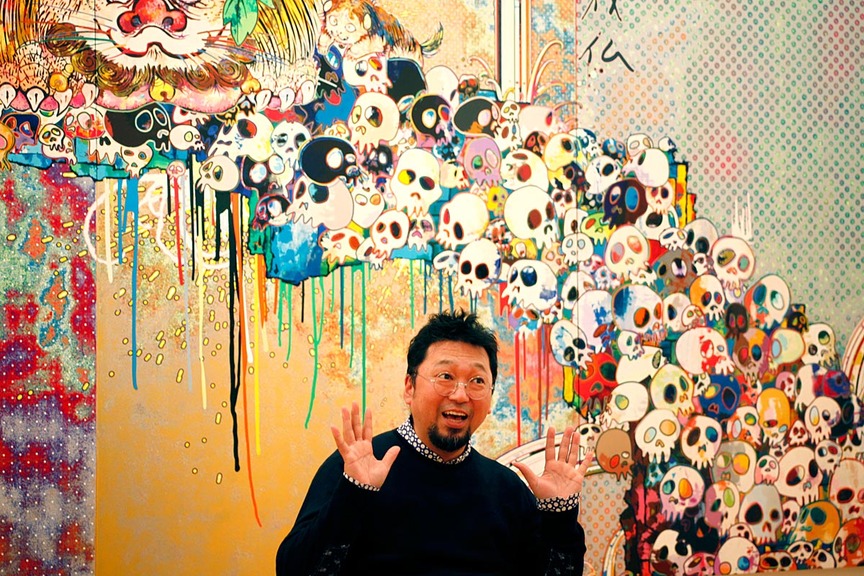
R
E
V N
E
X
T
Takashi Murakami’s iconic, smiley-faced flowers sprouted in Hong Kong this winter. Opening November 29 at Gagosian Gallery, “Flowers & Skulls” drew the local press to the preview, where reporters dispensed smiles as manically cheery as those painted on the band of daisies surrounding them. Although Murakami—a powerful self-promoter—emerged internationally in the 1990s, “Flowers & Skulls” marks his first exhibition in the city.
Early in his career, the artist became famous for employing classical Japanese painting techniques to depict pop, anime icons, and his artistic practice continues to fuse divides in the art world: between high and low art (designing handbags for Louis Vuitton) and between East and West (his famous Mr. DOB character crosses Mickey Mouse with an anime demon). Many hands from his art corporation Kaikai Kiki Co. Ltd execute the painstakingly demanding designs, a collaboration which arguably banishes the distinction between artist and artisan. Running on a 24-hour clock, his studios even eliminate night and day.
Murakami’s nine new canvases at Gagosian shatter another binary—between joy (flowers) and terror (skulls). Though exploring new subject matter, the style of the paintings is unchanged. The indefatigable members of Kaikai Kiki Co. Ltd continue to leave no touch of the human hand, and the artworks continue to suffer from this very mechanical doggedness. At this point in his mature career, it is not possible to compare Murakami to the likes of radical craftsmen such as William Morris and John Ruskin, as has been done. There is nothing varied, expressive or frankly human about this slick enterprise, which constantly repeats itself in an unapologetic branding exercise.
On Thursday, the so-called “Andy Warhol of Japan” led the press through the gallery and posed for the dozen flashing cameras, extending his arms in a “ta-da” gesture and breaking into a short, spontaneous dance. In front of the show’s biggest painting, Of Chinese Lions, Peonies, Skulls, and Fountains (2011), Murakami plopped down to the floor and crossed his legs, appearing diminutive before the enormous canvas. Cameramen compliantly splayed out across the ground to capture the effect. Charmed journalists chortled at the antics.
“Why do you use bright colors, Murakami-san?” asked a reporter with a face as buffed as the lacquered canvases. She answered for him, “It is because you are super happy!” As it happens, it is nearly impossible to preserve an inquisitive, interrogating mind in front of these new works, which, as the artist has deftly written, try to “make your mind go blank.” For better or worse, Murakami has, once again, successfully satisfied this aim.



